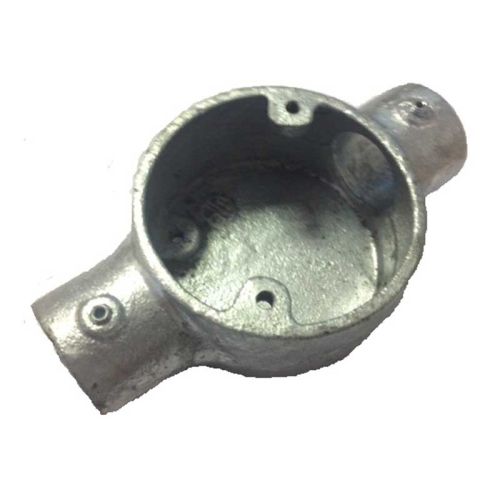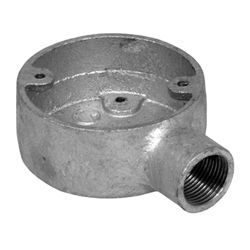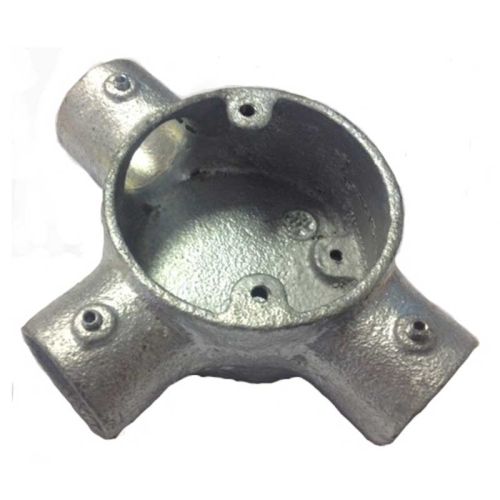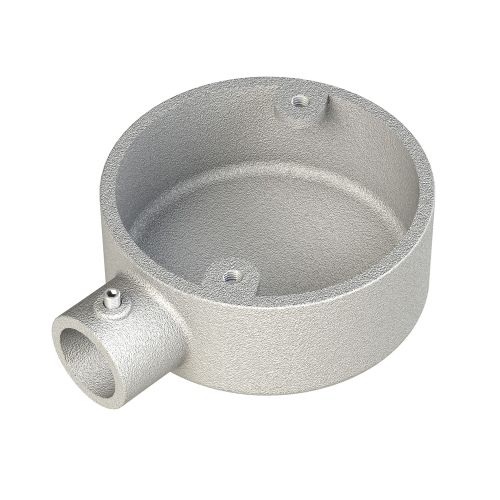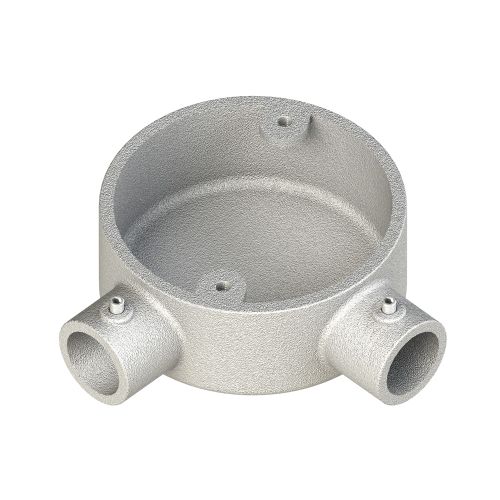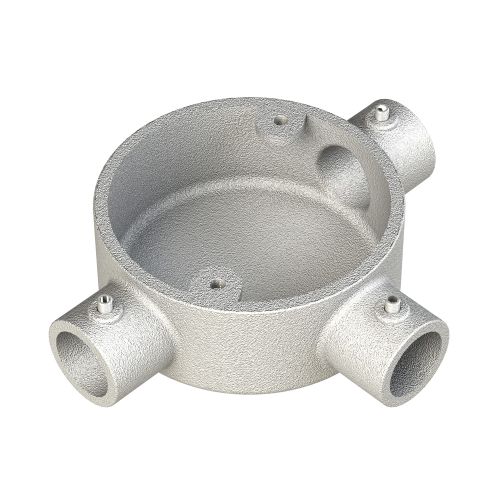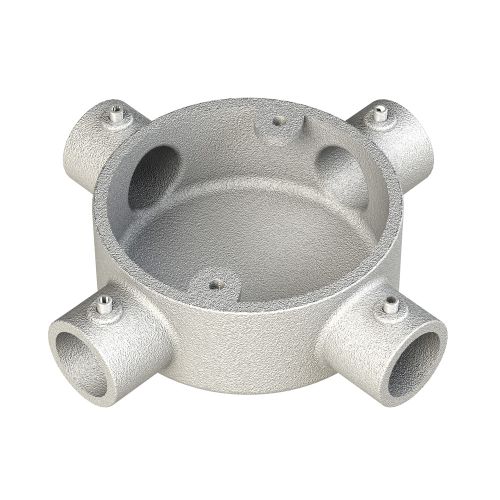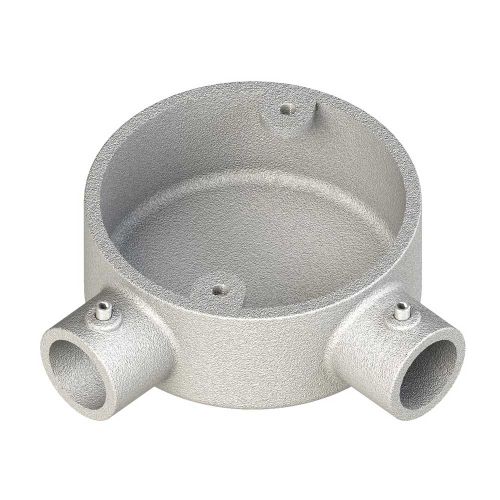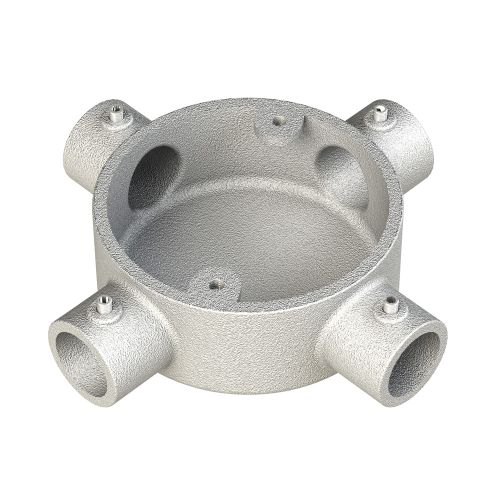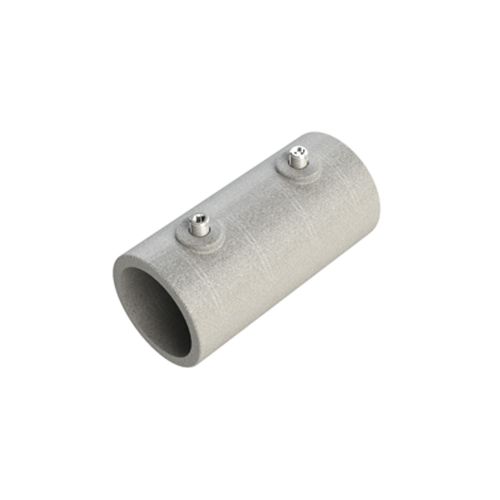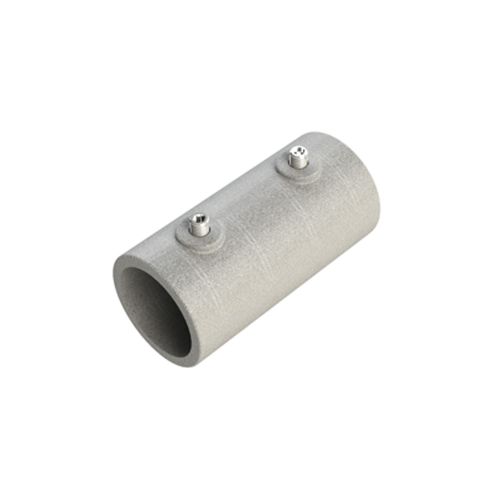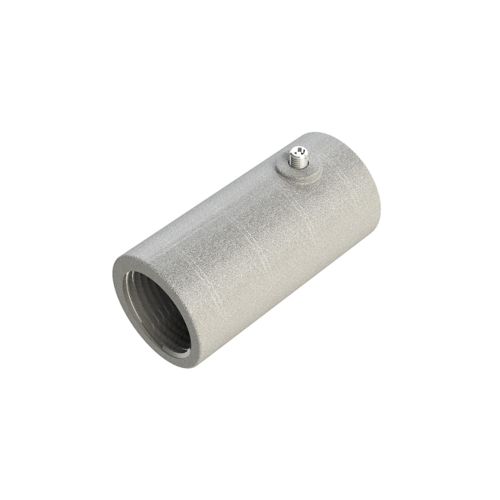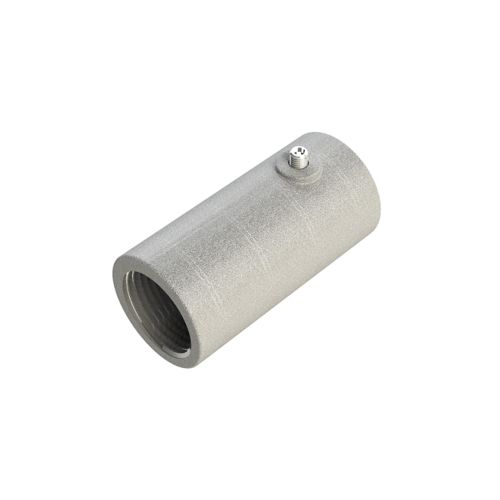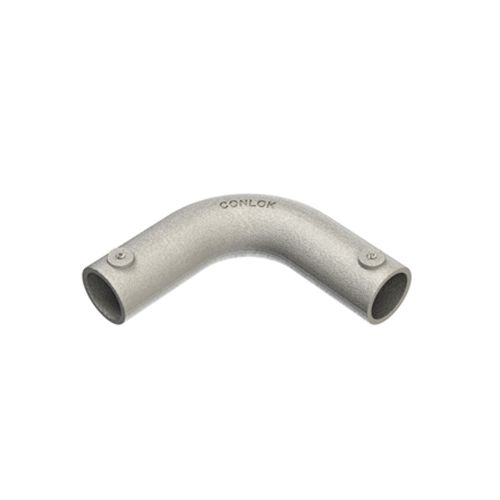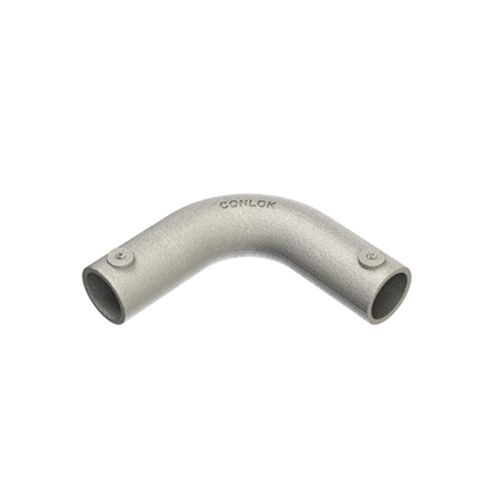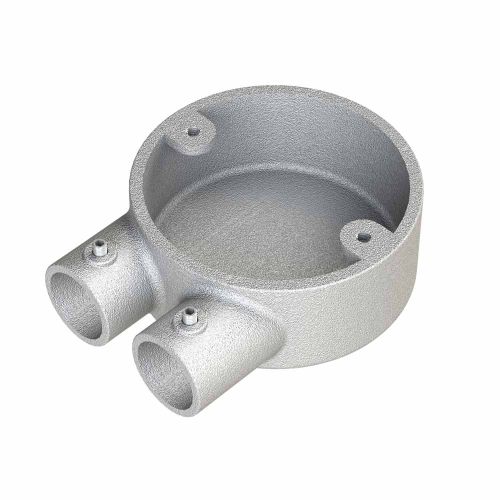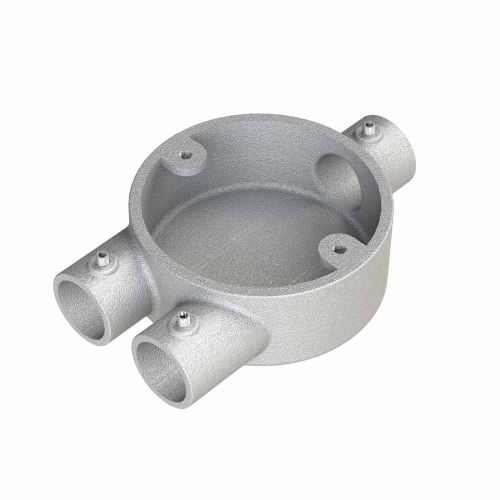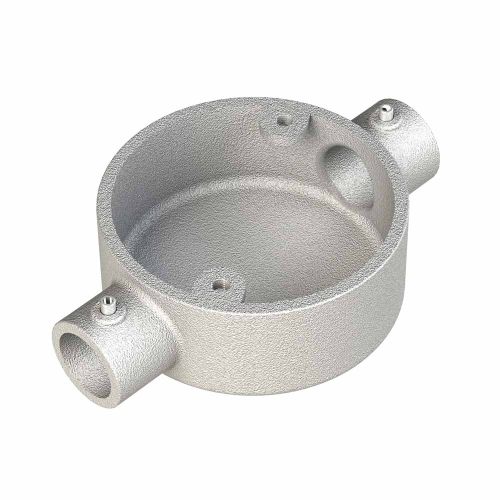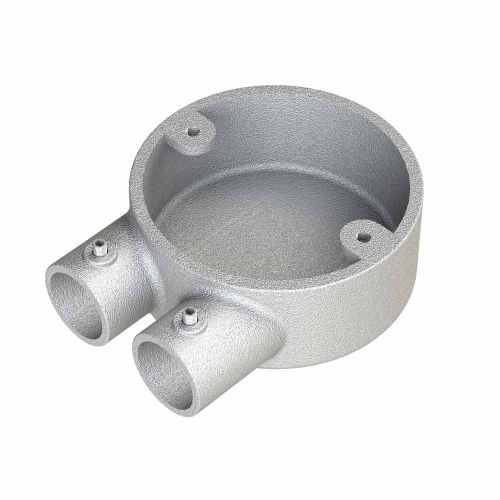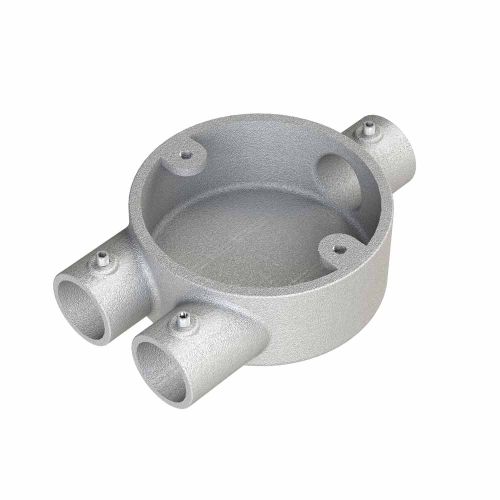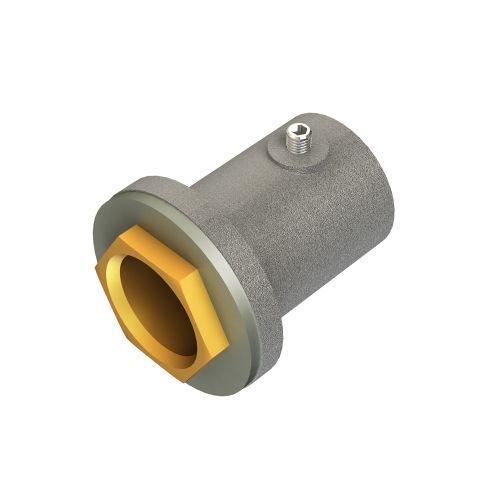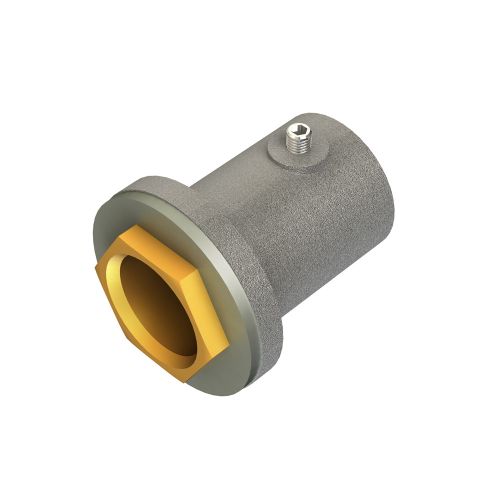Conlok
Conlok is widely known to be a quick-fit conduit system that is specifically designed to reduce labour and increase the speed of installation on a large scale. Conlok suppliers are one of the only fully galvanised conduit systems that offer enhanced corrosion resistance and a long lifespan.
It is no surprise that the Conlok conduit system boxes and accessories have been utilized in various relevant projects throughout the UK and Ireland. Some of these include the new Heathrow Terminal 2, The Sir Chris Hoy Velodrome, the new Glasgow Southern Central Hospital, and the multi-million-pound franchise Francis Crick Institute in London.
With a wide range of branch boxes, couplings, and adaptators, Conlok system boasts an accredited Conlok conduit system by The British Standard Institute with BS EN 61386-21:2006 which is the same BS no. as the traditional screwed system.
The Conlok conduit system is known to be a standard time-saving and cost-effective solution – a contractor can save up to 65% on labour costs. Conlok suppliers can testify to the multiple benefits of the Conlok galvanised conduit system and related accessories such as a dramatic decrease in installation time, enhanced corrosion resistance, longer lifespan, no need for on-site threading, and much more.
Our full conlok galvanised conduit range is available for next-day delivery throughout the UK and Republic of Ireland.
What is a conduit system?
An electrical conduit system is an electrical tubing used for the protection and routing of electrical wiring. It can be made from various materials such as plastic, metal, fiber, and fired clay. To make the explanation simpler, conduit is a general term that is used to describe any system that contains electrical conductors.
The Conlok conduit system is installed for multiple purposes, some of them including operating as pull outlets for the conductors that are being installed, providing cavities for the creation of splices and taps in conductors, connecting conduit sections, and providing taps for branch conduit runs.
Other than that, Conlok conduit system may also swerve as mounting outlets for wiring devices and lighting fixtures, as well as provide access for conductors for maintenance and future system changes.
Types of Electrical Conduit System
1. Electrical Metallic Tubing (EMT)
Electrical conduit systems are a common unbending conduit that is generally made of galvanised steel, but can be made from aluminum as well. It is described as the thin-wall conduit because compared to Rigid Metal Conduit (RMC) it is much more thinner and lightweight. Despite being rigid, it can be bent using a conduit bender tool.
EMT is installed with fittings and couplers that are secured with compression-type fasteners or setscrew. Commonly used in exposed indoor wiring situations, it often runs in light commercial or residential construction.
1. Rigid Metal Conduit (RMC)
RMC (Rigid Metal Conduit) is made from heavyweight galvanized steel and is installed using threaded fittings. It is mainly used outdoors so it can provide further protection from damage. It provides structural support for electrical panels, cables, and other electrical equipment.
It is also one of the costlier options when it comes to electrical wiring in the market, but offers a sufficient amount of additional strength and durability.
1. Intermediate Metal Conduit (IMC)
IMC is also another thinner and lightweight version of RMC and is equally approved to be used for similar applications as RMC. In many construction spaces, it is far easier to use IMC because of its lighter weight and ease of use than the RMC.
In addition, it provides the same amount of protection as RMC and is considered a more economic alternative for projects where budget is tight.
1. Flexible Metal Conduit (FMC)
Flexible Metal Conduit (FMC) systems have a spiral construction that has made it extremely flexible. This flexibility allows the FMC to be very adaptable through walls and other structures. FMC can be seen being used commonly for dry indoor locations that only last for short runs.
In addition, FMC systems are a great substitute option for areas that require close quarters and tighter bends. Common areas where FMC is used include lights, attic vents, and water heaters.
1. Liquid-tight Flexible Metal (LFMC)
Liquid-tight Flexible Metal (LFMC) systems are flexible metal conduits that are used with sealed fittings and has a plastic coating. The parts that make up a LFMC are all water-tight and this electrical conduit is also used with outdoor equipment such as air conditioner units.
Types of Conlok Conduit System Fittings
Electrical conduit systems have various accessories involved such as a range of PVC and steel accessories which include angle boxes, couplers, compression glands, adaptors, etc. Here at Meteor, you will find available an extensive Conlok conduit system range of couplings, branch boxes, and adaptors.
Here is all the relevant information you need to know about the various Conlok conduit system fittings available based on their function, and how they are installed.
Conlok Coupling
Conduit couplers such as the Conlok 25mm Galv Flanged Coupler and the Conlok 20mm Flanged Coupler are necessary for any coupling system. They are used specifically for securely linking together lengths of conduit and attaching site-fabricated bends.
Regardless of PVC conduits with a belled side being able to be linked without couplings, they would still be required for sections where the conduit has to be cut to size. Conlok conduit couplers come in a variety of sizes and some of them are rigid conduit couplings, which means they are threaded on the side.
Keep in mind that if an electrical conduit is passing through a wall or making some other kind of transition, a conduit body should be considered and used in that context.
Even if it is for the first section of conduit entering or leaving the box or enclosure, it is better to use pullboxes or bodies so that the conductors can be retracted with ease if the enclosure needs to be removed for any reason.
Conlok Conduit Branch Box
Conlok conduit branch boxes are mainly used for raceways to serve as a conduit grounding system. Conduits always terminate at some type of electrical branch box or at a fixed equipment that serves the same purpose. To secure conduits to branch boxes and to join lengths of conduits together to form long straight runs or bends, special connectors are used.
A raceway is the boxes, connectors and conduits forming a wire enclosure system – raceways are enclosed conduits that form a physical pathway for the electrical wiring to follow. The metal raceway then acts in place of the grounding wire that is found in non-metallic cabling.
For metal raceways to properly serve as grounding systems, the condition is that all sections of the raceway have to be electrically connected without any interruptions. Conlok conduit system branch boxes come in various types, such as the Conlok 2 way Quick Fit Galvanised Steel Circular Through Box and the Conlok 3 way Galvanised Steel Circular Branch Y Box.
Conlok Conduit Adaptor
Conduit adaptors or conduit fittings allow connections to be made in an electrical system. A Conlok conduit adaptor’s purpose is to connect two runs of conduit or secure conduit to an electrical device.
The difference between Conlok conduit male and female adaptors is that the male adaptors have a pin sticking out in which it plugs into something while the female adaptor does not. In general adaptors do not have anything particularly special about them – they are simply conductors that connect one end to the other in order to conduct electricity.
At Meteor you have various Conlok conduit system adaptors such as the Conlok 25mm Galv Female Adaptor and the Conlok 20mm Galv Female Adaptor.

